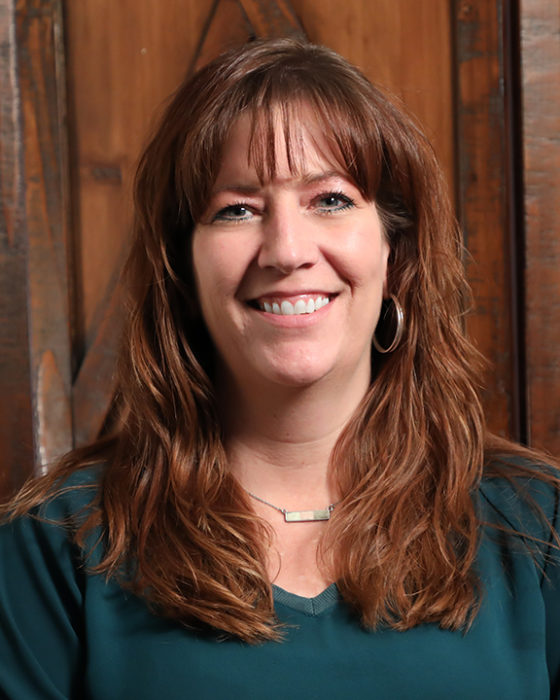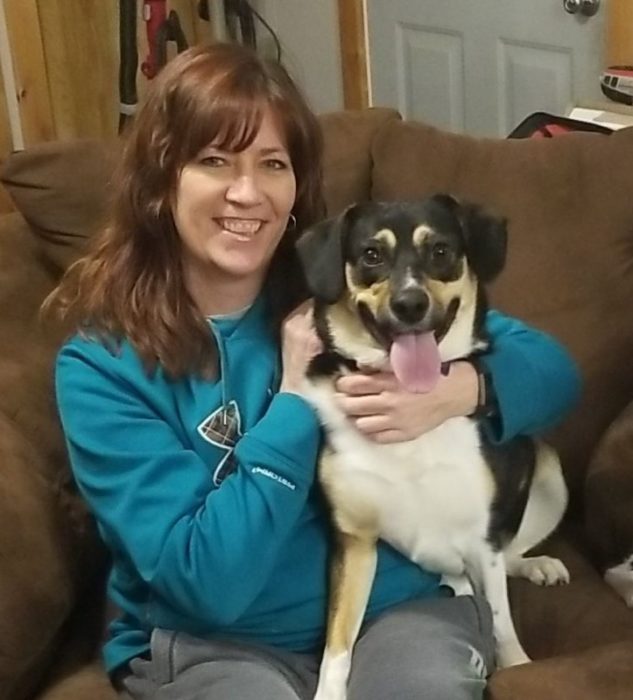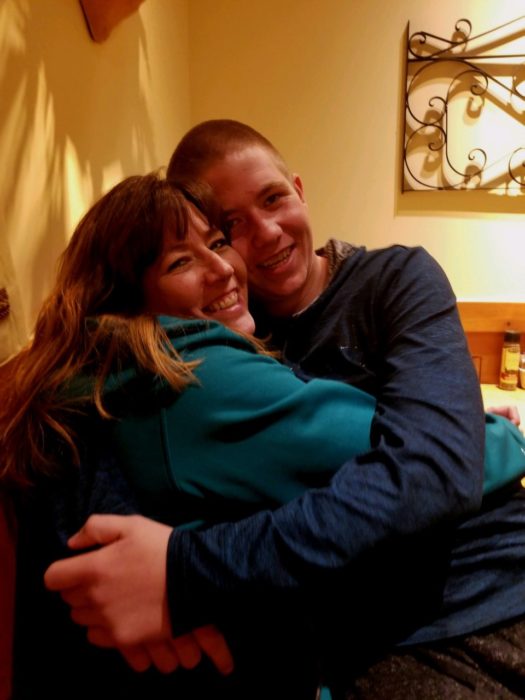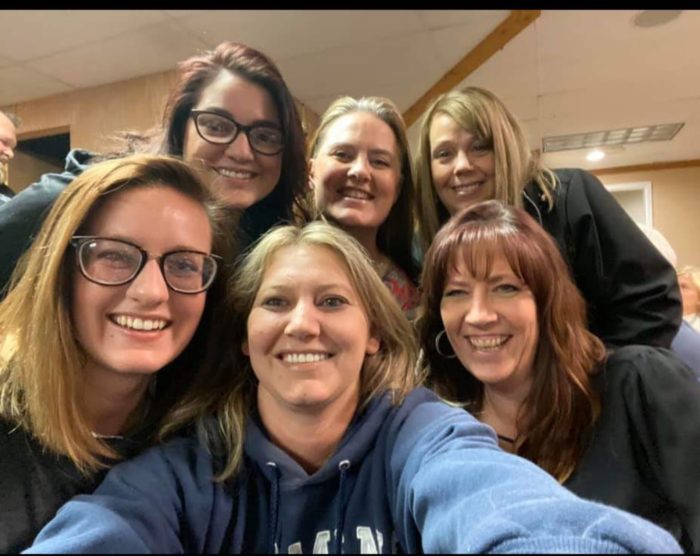Tricia Christensen: Near-Death Experience Leads to New Diagnosis and More Optimistic Outlook
January 2020

After a lifetime of dealing with abdominal pain, Tricia Christensen recently learned that she has Crohn’s disease.
For as long as she can remember, Tricia Christensen has had bouts of severe abdominal pain.
“I was diagnosed with colitis when I was a kid,” the 48-year-old Cheyenne resident shared recently.
She experimented with her diet, “to find out what works and what doesn’t when it comes to what I can hold down and keep in,” she said. “But the reality is that a lot of things make me sick, and I have just had to learn to deal with it. That’s my day-to-day ‘normal.’”
Tricia has also suffered from severe back and joint pain and was diagnosed with a “bad” gallbladder a few years ago. She had the gallbladder removed, hoping that might help.
Tricia continued to have what she calls “gut” aches, but they seemed “less severe than before,” she said.
“I thought this is my body now. It’s not so bad.”
Pain ‘just got worse and worse’
Then, last March, Tricia suffered an abdominal attack unlike anything she’d ever experienced.
She had gone out to eat with friends. She started feeling sick so decided to head home.
Usually she would feel better after a few hours, “once everything would clear out of my system,” she said. This time, though, the pain “just got worse and worse.”
Tricia didn’t call anyone. “I didn’t want to bother my family or friends,” she said. The next morning, she let her family know that she couldn’t make it to her niece’s birthday party that day.
Fortunately, Tricia’s mom had an uneasy feeling about what was happening and stopped by to check on her.

Tricia with her dog, Koda
By the time Tricia’s mom showed up at her house, Tricia could barely move because of the pain. She was also vomiting, uncontrollably. “It was so bad I was screaming,” she said. “My poor dog was freaking out.”

Tricia’s son, Ryder, carried her into the Emergency Department after she suffered her first major abdominal attack.
Her mother called Tricia’s adult son to come over and help them transport Tricia to Cheyenne Regional Medical Center’s Emergency Department. “I remember my mom on the phone yelling, ‘Ryder, you need to get over here and help me now!’ ” Tricia said. “Ryder got me into the car and pretty much carried me through the doors of the hospital.”
When Tricia arrived at the hospital, her blood pressure was 50/20, dangerously low.
A CT scan showed there was a blockage in Tricia’s small intestine.
Tricia was admitted to CRMC, where she stayed for the next week. To clear the obstruction, a tube was inserted through her nose and into her intestine.
She was given an IV for nutrition, hydration and pain relief but wasn’t allowed to eat or drink anything. “I had a sponge with some flavoring that I could suck on,” she said. “But I couldn’t have anything that might make the blockage worse.”
Tricia said her hunger and thirst and having to lie still made her “cranky” at times. “I’m normally busy with work, volunteering and doing things with my family and friends,” she said. “It was hard to be in bed for seven days. And I had a tube with brown gunk coming out of my nose.”
Tricia credited the doctors and nurses for taking her frustration in stride. “I yelled at one of the triage nurses when I first came in,” she said. The nurse stopped by later that night to see how Tricia was doing. “I felt like I needed to apologize, but he said he understood and just wanted to be sure I was OK.”
A new diagnosis
While she was in the hospital, Tricia was diagnosed with Crohn’s disease, a chronic inflammatory disease of the digestive tract that can cause severe abdominal pain, diarrhea, nausea, fatigue, weight loss and malnutrition. It can also trigger back and joint pain.
The diagnosis was based on Tricia’s CT scan, symptoms and medical history.
Tricia said she appreciated the time that Dr. Take Pullos, a Cheyenne Regional Medical Group surgeon; Dr. Hala Toubbeh, a gastroenterologist; and several of the CRMC hospitalists spent with her. They educated her about the disease and answered her questions.
After she left the hospital, Tricia was put on a regimen of medications and a diet of frequent small meals to help her manage the disease.
Currently there is no cure for Crohn’s disease, and diet and medication aren’t foolproof. Tricia was also at a greater risk for flareups since she’d gone so long without being diagnosed or treated.
Bowel resection required
In May Tricia had another abdominal attack. When her parents arrived at her house to check on her, Tricia’s dad insisted they call 911.
Tricia was rushed by ambulance to the hospital, and this time surgery was needed. The surgeon, Dr. Douglas Schmitz, removed a bowel obstruction as well as a foot of Tricia’s small intestine, a few centimeters of her colon and her appendix. “Dr. Schmitz and his team went inch by inch,” Tricia said, “to be sure they got all the bad tissue that needed to come out. Then they put everything back together again.”
Tricia was in the hospital for 10 days. Even with all her health problems, Tricia said she felt fortunate: “They were able to test the tissue to confirm the Crohn’s diagnosis,” she said. “I finally knew without a doubt what had been making me sick for so long. I also made it through the surgery OK, and I had doctors and nurses who were taking great care of me.”
Dr. Toubbeh was one of Tricia’s favorites. “She remembered me from the first time I came to the hospital and always had time to talk to me and answer my questions. She’s the best.”
The surgeons helped Tricia feel optimistic, too. “They were able to get all the problem areas out, and my gut was still going to be able to work. I was happy for that.”
The third-floor nurses who cared for Tricia were also “awesome,” she said. “When I was being discharged, one of the nurses even came back in on his day off to say goodbye.”
Joann Bourlier-Childress, a physician assistant in CRMC’s Emergency Department “was amazing, too,” Tricia said. “She knew how to help me calm down when I first came in and was yelling because of the pain. She had an incredible amount of patience.”
Lifetime of learning ahead

Tricia credits close friends and her family for helping her get back on her feet again: “I can’t thank them enough.”
Despite the struggles she’s had this past year, Tricia said she is grateful.
“I have so many good friends and co-workers who did a lot to help me get back on my feet again,” she said. “I can’t thank them enough.”
Tricia’s family has been there for her, too. “If my mom hadn’t come by my house that first time, I might have died,” she said. “Everyone checks up on me. And all of them have keys to my house now,” she added, smiling. “They want to be sure they can get to me if they need to.”
As for her care at CRMC, Tricia said she couldn’t have asked for more: “Because this is an immune-related disease, it is taking a long time for me to heal from surgery, and there may be more surgeries ahead. But the doctors and nurses at CRMC and my doctor’s office have been great at supporting, encouraging and reassuring me. I have a lifetime of learning and trying to cope with this ahead of me. But at least I know what I’m dealing with now, and I have CRMC to thank for that.”